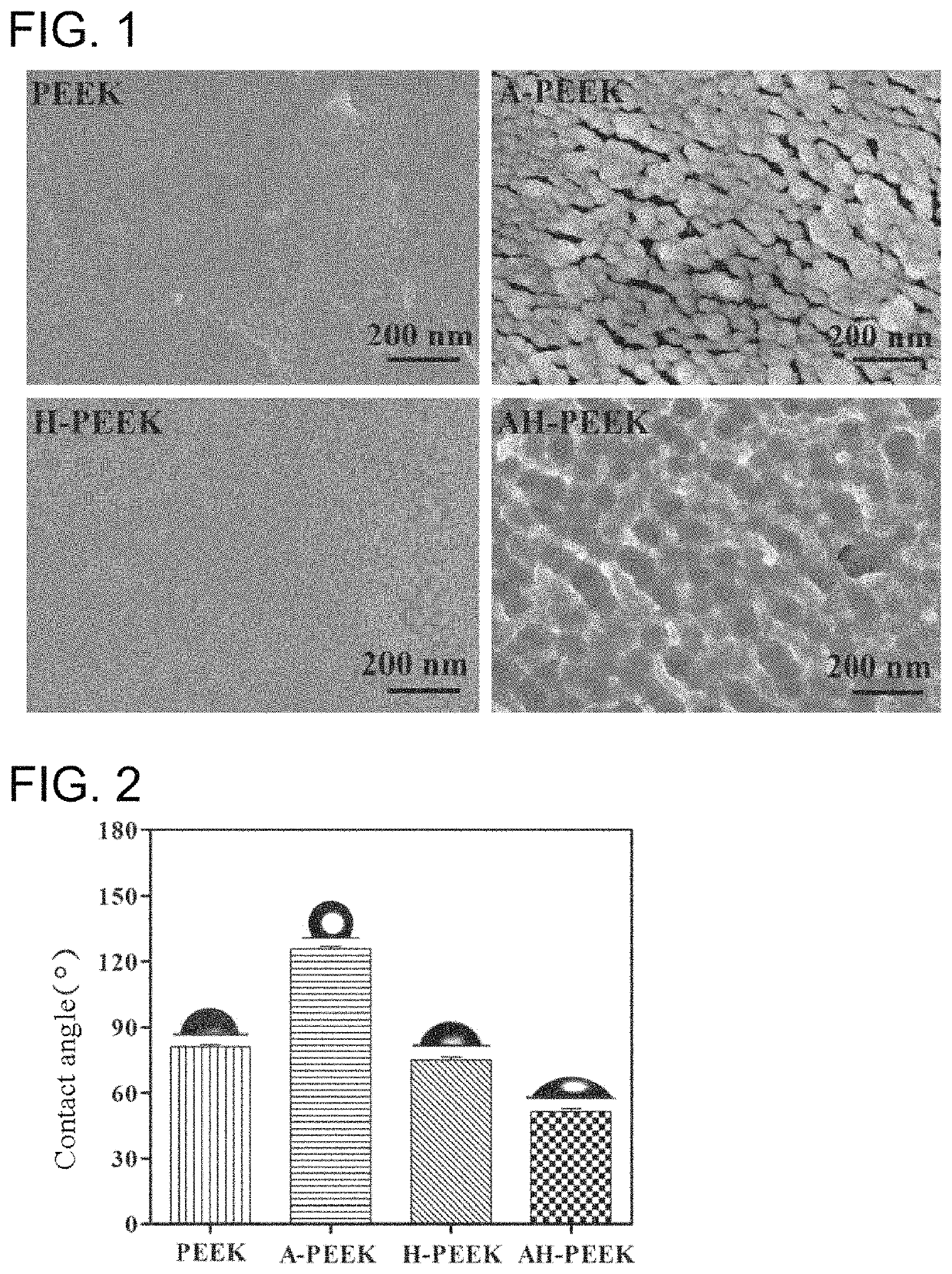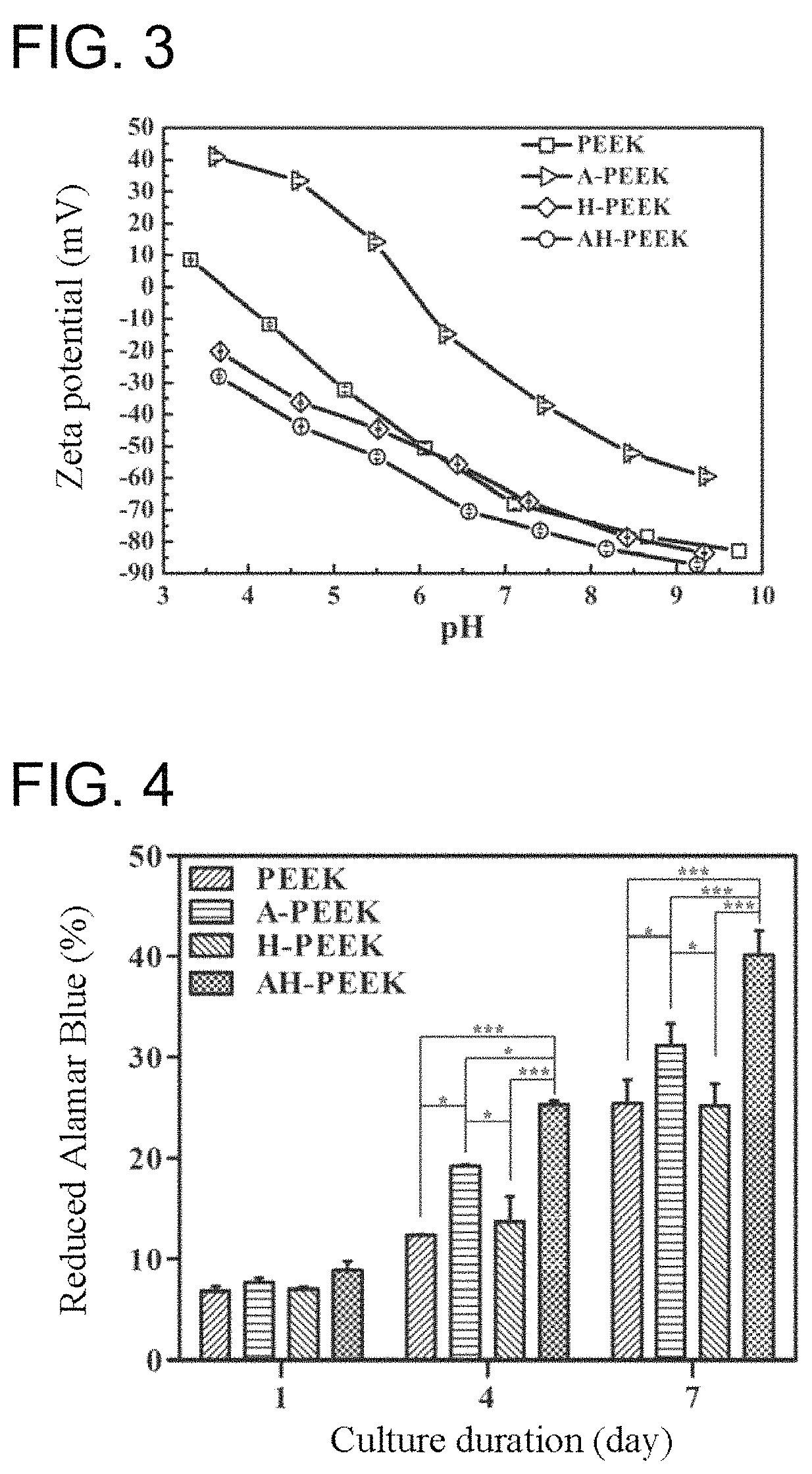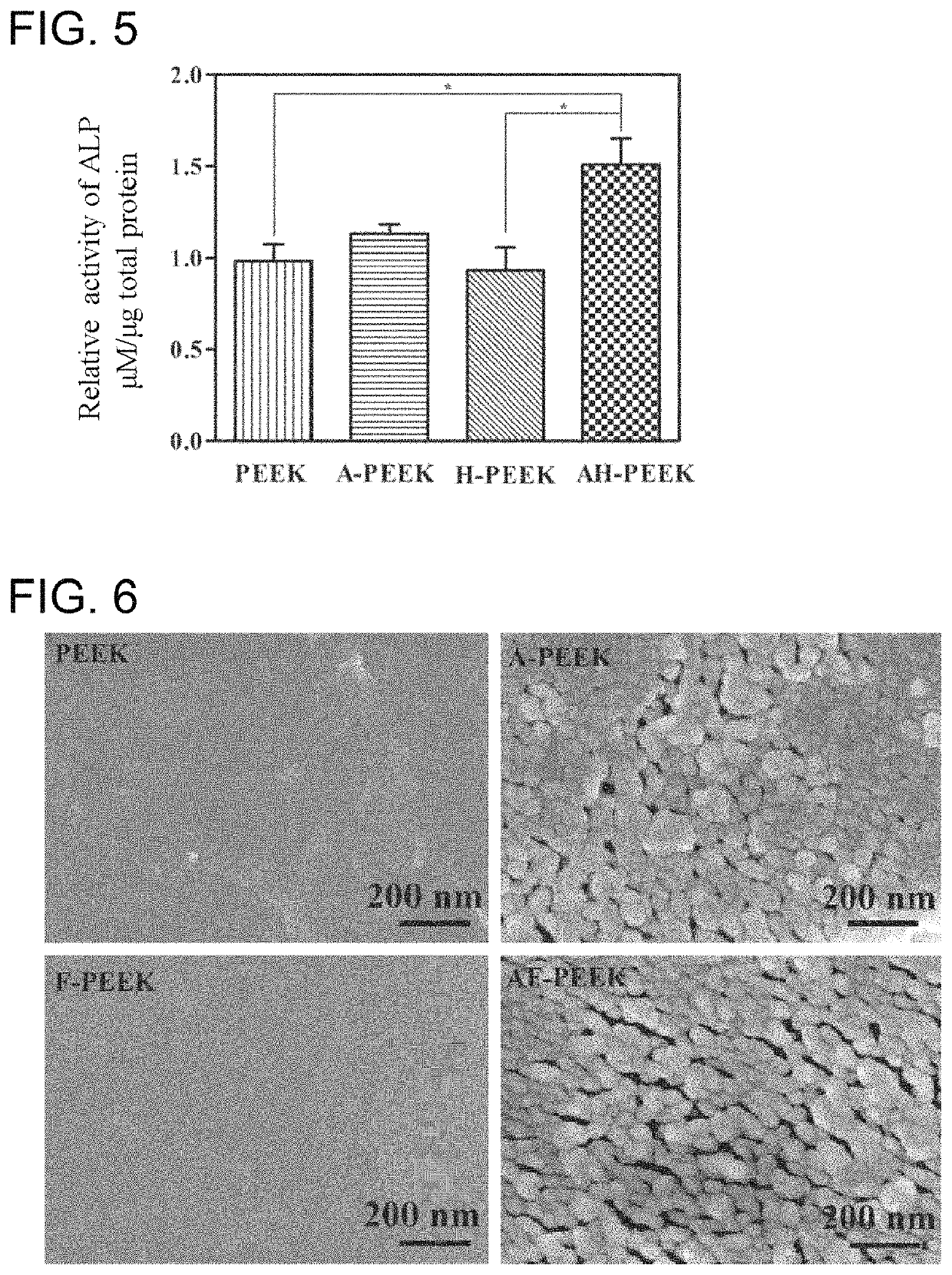Surface modification method for polyether-ether-ketone material
a surface modification and ether-ketone technology, applied in the field of surface modification of biomedical polymers, can solve the problems of limiting the long-term application of the material as an implant material, affecting the survival rate of the material, etc., to achieve the effect of promoting osteogenic differentiation of bmscs, enhancing bio-related properties of the fluorinated peek surface, and increasing proliferation ra
- Summary
- Abstract
- Description
- Claims
- Application Information
AI Technical Summary
Benefits of technology
Problems solved by technology
Method used
Image
Examples
example 1
[0040]Square samples (10 mm×10 mm×1 mm) of pure polyether-ether-ketone (PEEK) were used. The samples were polished and ultrasonically cleaned in acetone (for 30 min) and ultra-pure water (for 30 min). The cleaned samples were dried in an air oven at a temperature of 80° C. and carefully preserved. The dried samples were treated using Ar plasma immersion ion implantation according to the process parameters listed in Table 1. Furthermore, the Ar-PIII treated samples were immediately immersed in an 30 wt % H2O2 solution for 24 h, ultrasonically cleaned in distilled water (3 times, each time for 20 min), dried in air to give AH-PEEK, and carefully preserved.
[0041]AH-PEEK in FIG. 1 shows the SEM morphology of the PEEK surface modified by means of the method from the example 1. It can be seen from the image that shallow nanoporous structures are formed on the modified surface with a size ranging from tens of nanometers to a hundred nanometers. AH-PEEK in FIG. 2 shows the water contact ang...
example 2
[0042]The surface zeta-potential of samples treated according to comparative example 1, comparative example 2, and example 1 was measured to evaluate the electrical state of the surface. Specifically, the zeta-potential variation of the diffusion layer near the surface versus pH of the electrolyte solution was measured by a Surpass electrokinetic analyzer (Anton Parr, Austria). For each sample set, two specimens with a size of 20 mm×10 mm×1 mm were fixed face to face and parallel to each other on sample holders, with a certain gap between them. A KCl solution (0.001 M) was used as the electrolyte and the pH value thereof was adjusted by HCl and NaOH. At each pH value, the streaming current in the diffusion layer between the surface and the electrolyte, pressure, electrolyte constant, and size of the sample were measured, from which the zeta-potential was calculated using specific software. For statistical accountability, the zeta-potential was measured four times at each pH value.
[0...
example 3
[0044]BMSCs were used to evaluate the cytocompatibility of the samples treated according to comparative example 1, comparative example 2, and example 1. The cell proliferation of BMSCs was determined using the alamarBlue™ assay (AbD serotec Ltd, UK). Detailed instructions are described as follows:
[0045]1) All the specimens were sterilized with 75% ethanol and transferred to 24-well tissue culture plates. 1 mL of BMSC suspension with a density of 2.0×104 cell / mL was added to each well.
[0046]2) The 24-well tissue culture plates were incubated in an incubator with a humidified atmosphere of 5% CO2 at 36.5° C. for 18 h.
[0047]3) After withdrawing the culture medium, the surface of the samples was cleaned by a phosphate buffer saline (PBS) solution. All the samples were transferred to a new 24-well tissue culture plate and incubated in the incubator.
[0048]4) After 1, 4, and 7 days, the culture medium was replaced by a fresh medium with 5% alamarBlue™ in each well. After incubation of the ...
PUM
| Property | Measurement | Unit |
|---|---|---|
| water contact angle | aaaaa | aaaaa |
| water contact angle | aaaaa | aaaaa |
| temperature | aaaaa | aaaaa |
Abstract
Description
Claims
Application Information
 Login to View More
Login to View More - R&D
- Intellectual Property
- Life Sciences
- Materials
- Tech Scout
- Unparalleled Data Quality
- Higher Quality Content
- 60% Fewer Hallucinations
Browse by: Latest US Patents, China's latest patents, Technical Efficacy Thesaurus, Application Domain, Technology Topic, Popular Technical Reports.
© 2025 PatSnap. All rights reserved.Legal|Privacy policy|Modern Slavery Act Transparency Statement|Sitemap|About US| Contact US: help@patsnap.com



